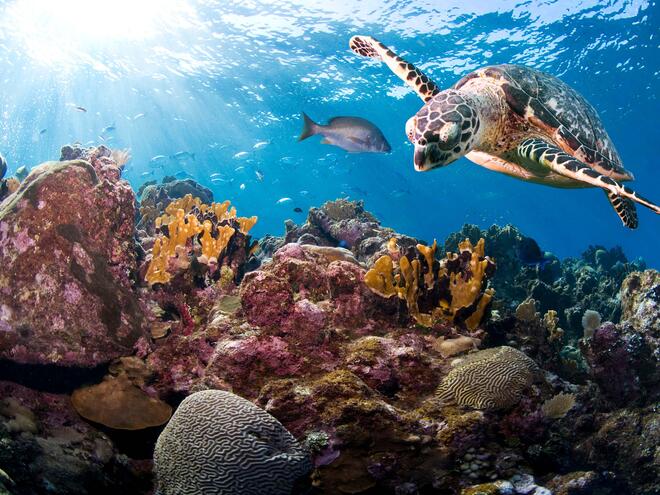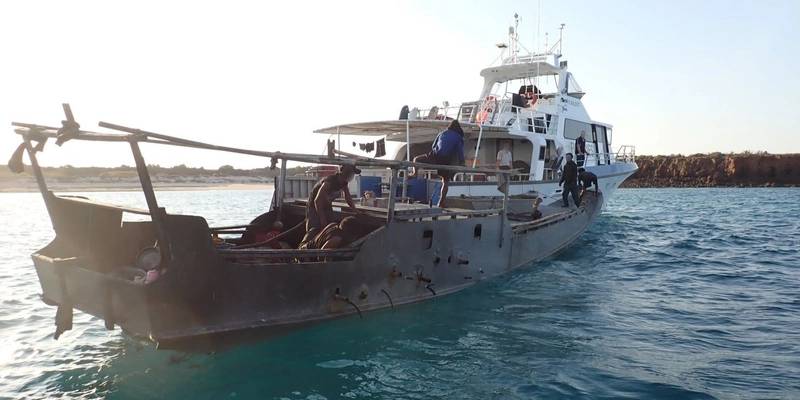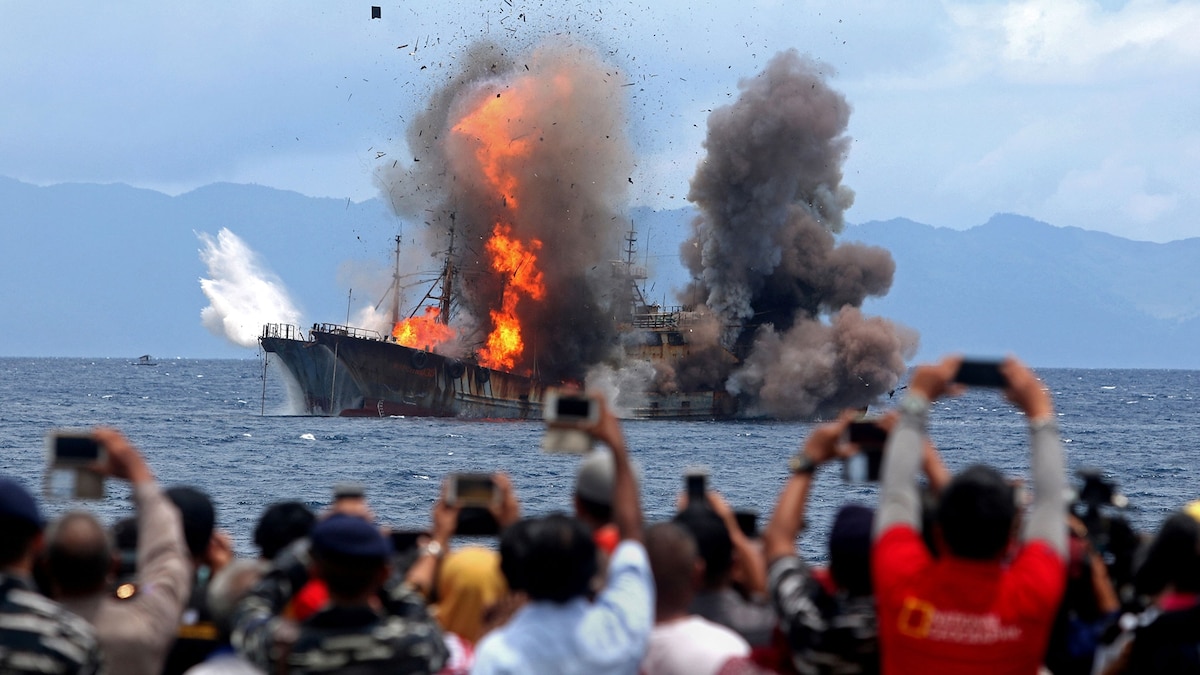Uphold the Legacy of the Marine Mammal Protection Act – Turtle Island Restoration Network

Analysis of Proposed Amendments to the Marine Mammal Protection Act and Implications for Sustainable Development Goals
Introduction
A draft reauthorization bill currently under consideration proposes significant amendments to the Marine Mammal Protection Act (MMPA), a foundational piece of United States conservation legislation for over 50 years. This report analyzes the proposed changes and their direct implications for the United Nations Sustainable Development Goals (SDGs), particularly SDG 14 (Life Below Water).
Key Proposed Legislative Revisions
The draft bill introduces several amendments that would alter the core functions of the MMPA. The primary changes include:
- Revision of Population Health Standards: The bill proposes to lower the conservation standard from maintaining healthy marine mammal populations to ensuring their mere survival.
- Limitation of Agency Mitigation Authority: The proposed legislation would reduce the capacity of federal agencies to mitigate the impacts of industrial activities, such as oil and gas exploration.
- Facilitation of Offshore Industrial Activities: The bill would permit the expansion of offshore drilling operations, potentially increasing risks to marine ecosystems.
- Modification of Incidental Harm Limits: It would become substantially more difficult to establish and enforce limits on the number of marine mammals that can be incidentally harmed or killed by human activities.
- Postponement of Protections for Endangered Species: The implementation of critical protections for endangered species, including the North Atlantic right whale, could be delayed.
- Alteration of Seafood Import Standards: The bill would potentially open U.S. markets to seafood imports from foreign fisheries that do not meet standards for preventing harm to marine mammals.
Conflict with Sustainable Development Goals (SDGs)
The proposed amendments present a direct challenge to the achievement of several SDGs, undermining national and global commitments to sustainability.
SDG 14: Life Below Water
The bill’s provisions are in stark opposition to the objectives of SDG 14, which aims to “conserve and sustainably use the oceans, seas and marine resources for sustainable development.”
- Target 14.1 & 14.2 (Marine Pollution & Ecosystem Protection): By facilitating expanded offshore oil and gas drilling and stripping agencies of mitigation tools, the bill would weaken efforts to prevent marine pollution and protect marine and coastal ecosystems from the adverse impacts of industrial activities.
- Target 14.4 (Sustainable Fishing): Allowing seafood imports from foreign fisheries with high levels of marine mammal bycatch directly contravenes the goal of ending destructive fishing practices and undermines efforts to create a sustainable global seafood supply chain.
- Target 14.5 (Conserve Coastal and Marine Areas): Lowering the conservation standard from “healthy populations” to “survival” represents a significant regression from the goal of conserving marine areas and protecting species, particularly those already critically endangered.
SDG 12: Responsible Consumption and Production
The proposed change to seafood import regulations directly impacts SDG 12, which promotes sustainable consumption and production patterns.
- Target 12.2 (Sustainable Management of Natural Resources): By allowing the import of seafood products sourced through unsustainable and harmful fishing methods, the bill would promote the degradation of marine natural resources rather than their sustainable management.
SDG 16: Peace, Justice and Strong Institutions
The MMPA is an example of a strong, effective environmental law. Weakening its provisions conflicts with the aims of SDG 16.
- Target 16.b (Promote and Enforce Laws for Sustainable Development): The proposed bill would systematically dismantle an effective and long-standing law for sustainable development, weakening the institutional framework for environmental protection in the United States.
SDG 17: Partnerships for the Goals
The bill threatens to undermine the United States’ role as a global leader in marine conservation.
- Target 17.14 (Enhance Policy Coherence for Sustainable Development): By relaxing domestic standards and import regulations, the U.S. would signal a departure from international conservation norms, potentially weakening global partnerships and policy coherence aimed at protecting marine biodiversity.
1. Which SDGs are addressed or connected to the issues highlighted in the article?
The article primarily addresses issues related to two Sustainable Development Goals:
- SDG 14: Life Below Water: This is the most relevant SDG, as the article’s central theme is the protection of marine mammals (whales, dolphins, seals) and the health of ocean ecosystems from legislative threats that would weaken the Marine Mammal Protection Act (MMPA).
- SDG 12: Responsible Consumption and Production: This SDG is connected through the article’s mention of international trade and supply chains, specifically regarding the importation of seafood from fisheries that do not adhere to protective standards for marine mammals.
2. What specific targets under those SDGs can be identified based on the article’s content?
Based on the issues discussed, several specific targets under SDG 14 and SDG 12 are relevant:
SDG 14: Life Below Water
- Target 14.1: By 2025, prevent and significantly reduce marine pollution of all kinds, in particular from land-based activities, including marine debris and nutrient pollution.
- Explanation: The article highlights the threat of expanded “offshore drilling at the expense of marine life.” Industrial activities like oil and gas drilling are a major source of marine pollution, and the proposed bill would “strip agencies of tools to mitigate” these impacts, directly undermining this target.
- Target 14.2: By 2020, sustainably manage and protect marine and coastal ecosystems to avoid significant adverse impacts… and take action for their restoration.
- Explanation: The article states that the MMPA has protected marine mammals for 50 years with “strong safeguards against harmful human activities.” The proposed bill would “gut” this act, weakening the standard from maintaining “healthy populations” to “merely ensuring survival,” which is a direct threat to the sustainable management and protection of marine ecosystems.
- Target 14.4: By 2020, effectively regulate harvesting and end overfishing, illegal, unreported and unregulated fishing and destructive fishing practices…
- Explanation: The article warns that the bill would “undermine U.S. leadership by opening our markets to seafood caught in foreign fisheries that kill marine mammals indiscriminately.” This points to the need to regulate destructive fishing practices, not just domestically but also through trade policies, to protect marine life.
- Target 14.5: By 2020, conserve at least 10 per cent of coastal and marine areas…
- Explanation: The article expresses concern that the bill would “delay urgently needed protections for critically endangered species like the North Atlantic right whale.” Protecting the habitats of such species is a key component of conserving marine areas and biodiversity, which this bill would jeopardize.
SDG 12: Responsible Consumption and Production
- Target 12.2: By 2030, achieve the sustainable management and efficient use of natural resources.
- Explanation: The article’s concern about allowing seafood imports from “foreign fisheries that kill marine mammals indiscriminately” relates to ensuring that consumption patterns (in the U.S.) do not drive unsustainable practices (abroad). This target promotes sustainable management of natural resources (fish stocks and marine ecosystems) throughout the supply chain.
3. Are there any indicators mentioned or implied in the article that can be used to measure progress towards the identified targets?
The article does not mention official SDG indicators, but it implies several metrics that could be used to measure progress or regression:
- Population Health of Marine Mammals: The article contrasts the current standard of “maintaining healthy populations” with the proposed, weaker standard of “merely ensuring survival.” The population size and health status of species like whales, dolphins, and seals serve as a direct indicator of the effectiveness of protection policies (relevant to Target 14.2).
- Number of Marine Mammals Harmed or Killed: The article states the bill would make it “nearly impossible to limit how many marine mammals can be harmed or killed” by industrial and fishing activities. This number, often referred to as bycatch or incidental take, is a critical indicator of human impact on marine ecosystems (relevant to Target 14.2 and 14.4).
- Conservation Status of Endangered Species: The specific mention of delaying protections for the “critically endangered species like the North Atlantic right whale” implies that the conservation status of such species (e.g., population numbers, mortality rates) is a key indicator of progress towards conservation goals (relevant to Target 14.5).
- Regulations on Industrial Activity: The article mentions the bill would “strip agencies of tools to mitigate industrial impacts like oil and gas drilling.” The existence and strength of regulations governing offshore industrial activities serve as an indicator of a country’s commitment to preventing marine pollution (relevant to Target 14.1).
- Import Standards for Seafood: The reference to opening markets to “seafood caught in foreign fisheries that kill marine mammals indiscriminately” implies that the sustainability standards applied to imported goods can be an indicator. Measuring the proportion of seafood imports certified as sustainable or compliant with marine mammal protection standards would be a relevant metric (relevant to Target 12.2 and 14.4).
4. Create a table with three columns titled ‘SDGs, Targets and Indicators” to present the findings from analyzing the article.
| SDGs | Targets | Indicators (Implied from the Article) |
|---|---|---|
| SDG 14: Life Below Water | 14.1: Reduce marine pollution from activities like oil and gas drilling. | Strength and enforcement of regulations designed to mitigate industrial impacts on marine environments. |
| SDG 14: Life Below Water | 14.2: Sustainably manage and protect marine ecosystems. | – Population health status of marine mammals (healthy populations vs. mere survival). – The number of marine mammals harmed or killed by human activities. |
| SDG 14: Life Below Water | 14.4: Effectively regulate destructive fishing practices. | Level of marine mammal bycatch in domestic and foreign fisheries supplying the market. |
| SDG 14: Life Below Water | 14.5: Conserve marine areas and protect endangered species. | Conservation status and population trends of critically endangered species (e.g., North Atlantic right whale). |
| SDG 12: Responsible Consumption and Production | 12.2: Achieve the sustainable management and efficient use of natural resources. | Existence and enforcement of import standards for seafood related to marine mammal protection. |
Source: seaturtles.org

What is Your Reaction?
 Like
0
Like
0
 Dislike
0
Dislike
0
 Love
0
Love
0
 Funny
0
Funny
0
 Angry
0
Angry
0
 Sad
0
Sad
0
 Wow
0
Wow
0




































![Lancaster homeowner’s energy-efficient renovation sparks clash over historic preservation [Lancaster Watchdog] – LancasterOnline](https://bloximages.newyork1.vip.townnews.com/lancasteronline.com/content/tncms/assets/v3/editorial/9/ed/9ed03d32-c902-44d2-a461-78ad888eec38/69050b156baeb.image.png?resize=150,75#)










































